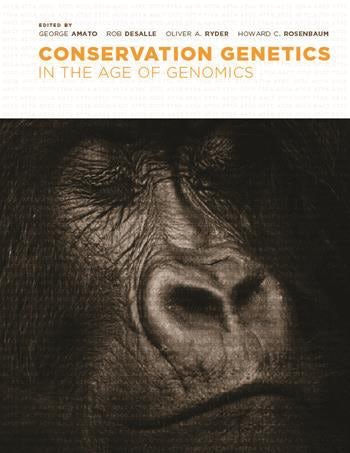Genome sequencing enables scientists to study genes over time and to test the genetic variability of any form of life, from bacteria to mammals. Thanks to advances in molecular genetics, scientists can now determine an animal's degree of inbreeding or compare genetic variation of a captive species to wild or natural populations. Mapping an organism's genetic makeup recasts such terms as biodiversity and species and enables the conservation of rare or threatened species, populations, and genes.
By introducing a new paradigm for studying and preserving life at a variety of levels, genomics offers solutions to previously intractable problems in understanding the biology of complex organisms and creates new tools for preserving the patterns and processes of life on this planet. Featuring a number of high-profile researchers, this volume introduces the use of molecular genetics in conservation biology and provides a historical perspective on the opportunities and challenges presented by new technologies. It discusses zoo-, museum-, and herbarium-based biological collections, which have expanded over the past decade, and covers the promises and problems of genomic and reproductive technology. The collection concludes with the philosophical and legal issues of conservation genetics and their potential effects on public policy.
- Contents
- ILLUSTRATIONS
- TABLES
- FOREWORD: The Continuity of Genomes and Genetic Resources for the New Century - Sydney Brenner
- ACKNOWLEDGMENTS
- GENERAL INTRODUCTION
- PART I Perspectives on the Union of Conservation and Genetics
- 1 The Expansion of Conservation Genetics
- 2 Conservation Genetics and the Extinction Crisis
- 3 Moving Toward a More Integrated Approach
- PART II Conservation Genetics in Action
- 4 Neutral, Detrimental, and Adaptive Variation in Conservation Genetics
- 5 Stopping Evolution
- 6 The Emerging Theme of Ocean Neighborhoods in Marine Conservation
- 7 Genetic Data and the Interpretation of Restoration Priorities of the Cicindela dorsalis
- 8 Range Collapse, Population Loss, and the Erosion of Global Genetic Resources
- PART III Saving Genetic Resources
- 9 Biodiversity, Conservation, and Genetic Resources in Modern Museum and Herbarium Collections
- 10 Banking of Genetic Resources
- 11 The Role of Cryopreserved Cell and Tissue Collections for the Study of Biodiversity and Its Conservation
- 12 The Silent Biodiversity Crisis:Loss of Genetic Resource Collections
- 13 Who Owns the Ark, and Why Does It Matter?
- PART IV Genomic Technology Meets Conservation Biology
- 14 Conservomics? The Role of Genomics in Conservation Biology
- 15 Genomics and Conservation Genetics
- 16 Crop Transgenes in Natural Populations
- 17 The Role of Assisted Reproduction in Animal Conservation
- 18 Conservation and Cloning:The Challenges
- PART V Policy, Law, and Philosophy of Conservation Biology in the Age of Genomics
- 19 Can Our Laws Accommodate the New Conservation Genetics?
- 20 The Import of Uncertainty
- Further Reading
- Contributors
- Index

